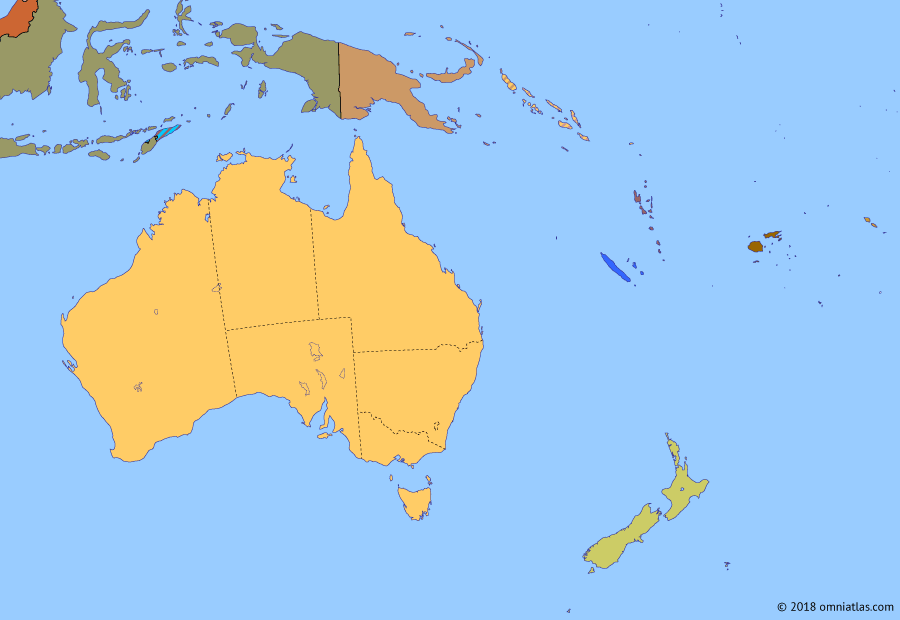Australasia 2003: Policing the Southwest Pacific

Policing the Southwest Pacific
17 May 1990 Bougainville Conflict
26 Jul 2003 Policing the Southwest Pacific
15 Sep 2021 AUKUS
15 Jan 2024 Australasia Today
In 1998 Papua New Guinea requested that Australia and New Zealand supervise the peace process in Bougainville, part of a greater trend as the two nations found themselves increasingly involved in maintaining peace in the Southwest Pacific after the withdrawal of Britain and the end of the Cold War. In the following years Australia led interventions to help secure the independence of East Timor from Indonesia and assist in restoring order in the wake of unrest in the Solomons.